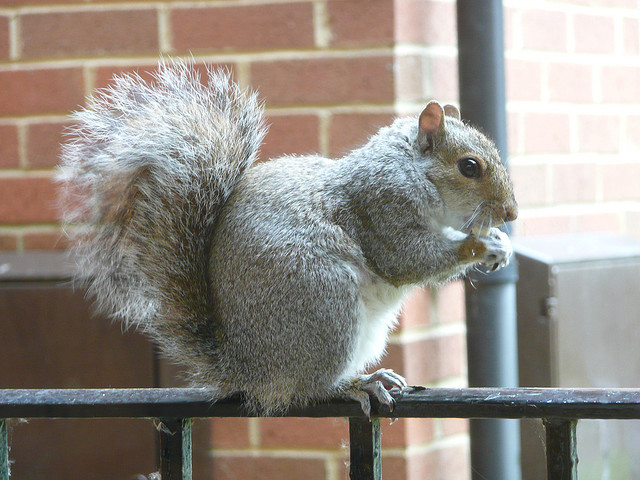Have you ever wondered how animals like squirrels survive NY’s freezing temperatures without outer clothing? While people typically respond to the cold by staying inside and putting on layers, it turns out squirrels have a similar strategy for dealing with the challenges of winter. They tend to spend more time in the den, and they put on “layers” by fattening up.
The type of squirrel you’re most likely to encounter around your property is an eastern gray squirrel (Sciurus carolinensis). These are predominantly gray in color—as you would guess from the name—with white bellies.
Gray squirrels do well in rural, suburban and urban areas in NY. These critters are homeotherms, which means that unlike some mammals, their body temperatures remain fairly constant throughout the year; they don’t hibernate. In the winter, squirrels spend less time foraging outside their dens, and it’s more common for several squirrels to share a den. This behavior allows more animals to take shelter and also to keep each other warm.
If you’ve observed the squirrels lately, you may have noticed they’ve been very busy storing food. Storing food, also called hoarding, is a behavior characterized by storing stashes of food for later. Squirrels usually do this by putting their food in a shallow hole and covering it up. They don’t remember all these “storage units,” and some of the forgotten seeds they leave behind will germinate and become shrubs, trees, etc. The stashes that are remembered will serve as food when resources are scarce in winter.
Squirrels also prepare for winter by bulking up. Throughout fall, they maximize food consumption and body mass. In winter, when food is hard to come by, these reserves will help the animals survive.
One other tactic gray squirrels use to keep warm in winter is shivering. Shivering isn’t just a sign that you’re cold; it also serves as a way to keep warm. While it certainly doesn’t sound fun, gray squirrels are remarkably good at generating heat by shivering.
The gray squirrels on your property are busily eating everything in sight during the end of summer and fall and storing food for later. Observe them if your interested to see them in action as they gear up for the approaching cold and snow!


 Receive FREE wildlife Tips!
Receive FREE wildlife Tips!
